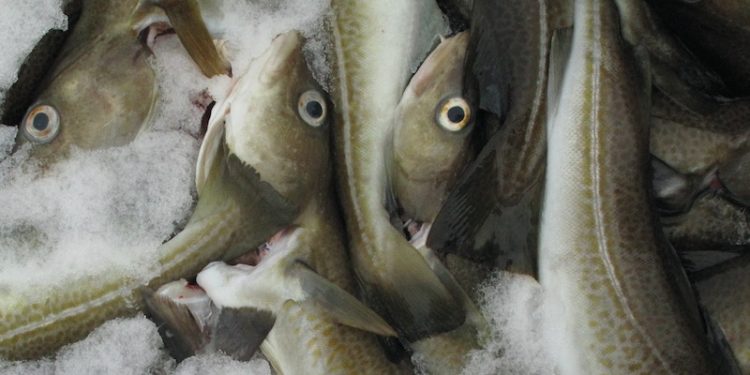According to ICES, the western Baltic cod stock has not improved as expected, with another year with a further downward revision in biomass and upward revision in fishing exploitation rate, although ICES notes that there was a surprisingly good recruitment in 2016 which, if protected from overfishing, may help replenish this severely overfished stock.
ICES states that the eastern Baltic Sea cod stock has shown few positive signs of development in the last year with fish spawning at smaller sizes, and fewer small fish seen in the survey overall. For the western Baltic cod, recruitment of individual fish to the fishable stock was at the highest, in contrast to the previous recruitment at a record low.
According to ICES, the western stock is still below all biomass reference points and suffers a fishing mortality well above sustainable levels.
The larger eastern Baltic stock, close to collapse in 2002, showed signs of recovery a few years ago but the stock status now is uncertain. However, by using a new kind of model, ICES has some confidence that the relative fishing pressure in the eastern Baltic cod is well above sustainable levels, and the biomass is just above the minimum spawning stock biomass.
A 5295 tonne total catch (including by third countries) is advised for Western Baltic cod, and 26,071 tonne total catch for Eastern Baltic cod.
ICES has combined the previously separate assessments for Bothnian Sea and Bothnian Bay herring into a single assessment, which it states also solves the ongoing issue with overlapping advice within the single EU quota-setting management area for Gulf of Bothnia herring.
The bulk of Baltic herring stocks are above all biomass reference points except for herring stocks in the western Baltic. The largest herring stock, central Baltic herring, received the largest increase in advice (24%), with an overall sustainable fishing exploitation rate. All other herring stocks are experiencing some level of overfishing.
ICES advice is for a 267,745 tonne central Baltic herring quota, 24,991 tonnes for the Gulf of Riga and 95,566 tonnes for the Gulf of Bothnia.
The sprat recommendation os for a 291,715 tonnes quota, while fishing mortality on sprat has continued to decline into sustainable levels in 2016, with biomass levels above all reference points, and this represents a minor reduction in advice (-7%) due to normal fluctuations in the stock.
ICES advises a decrease in catch for plaice, the only Baltic flatfish species under EU quota management. The stock is fished within sustainable levels, though ICES noted uniquely high discarding in 2016, 67% of the total catch, driven primarily by the Danish trawl fleet.
A plaice catch of 5405 tonnes is advised for the Kattegat, Belts and Sounds, as well as a Baltic plaice quota of 3104 tonnes.
As for most stocks, ICES advises a total commercial catch for 2017, which is independent of management area overlaps or third country fishing effort.
The full table of ICES advice can be found here in the ICES summary document.









